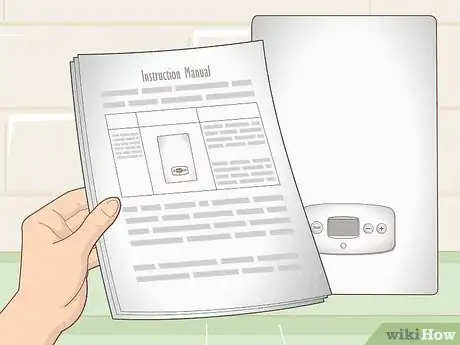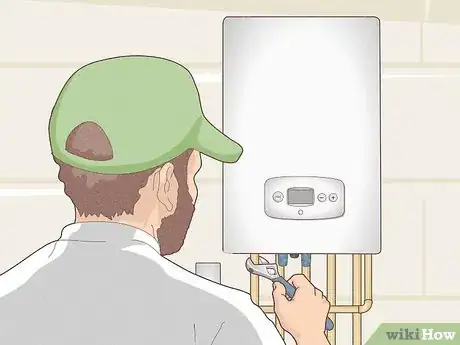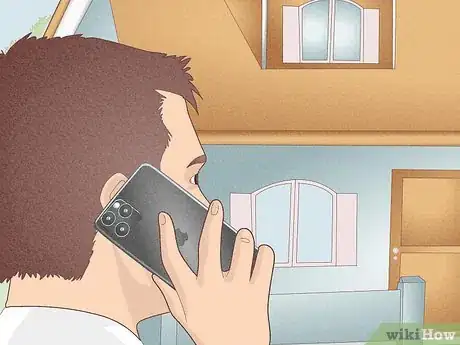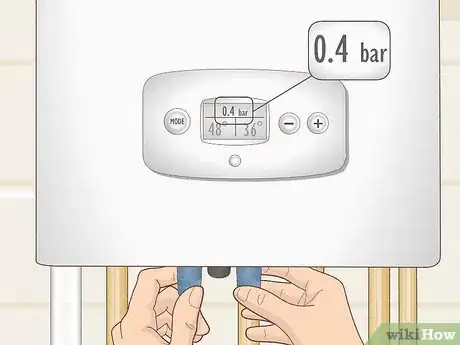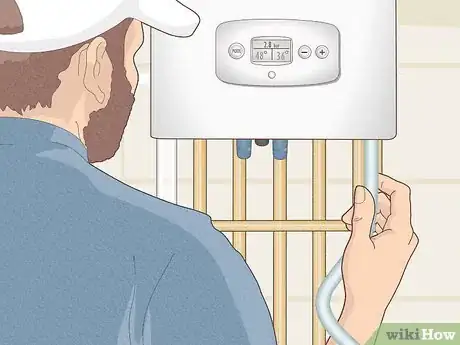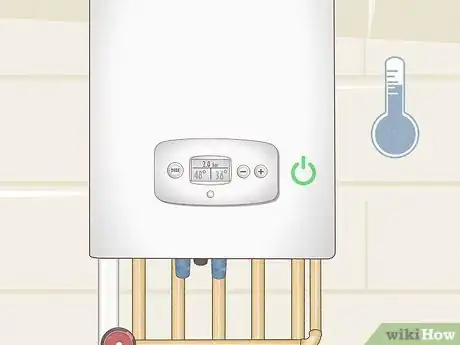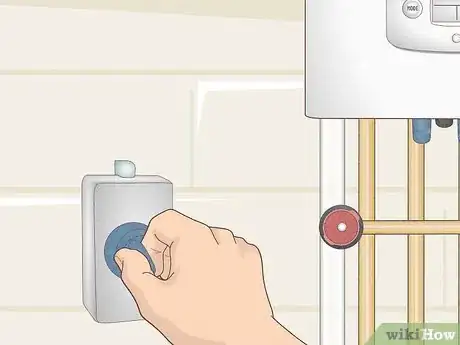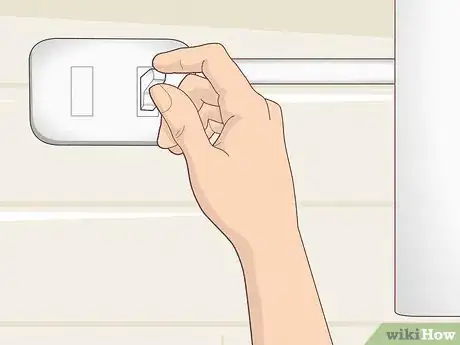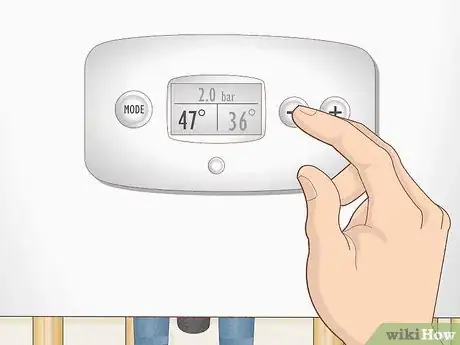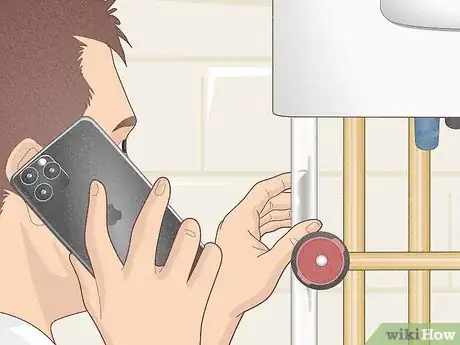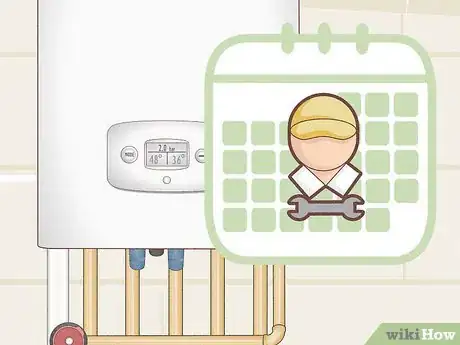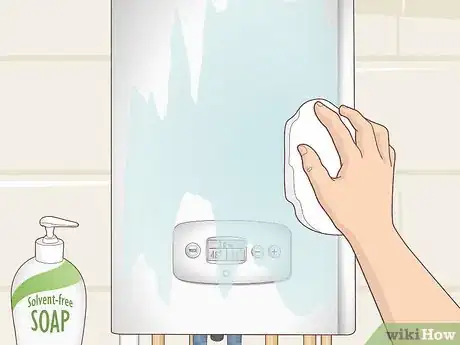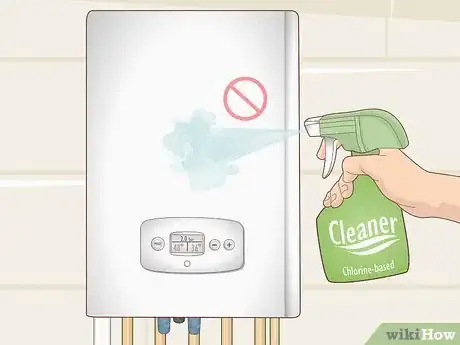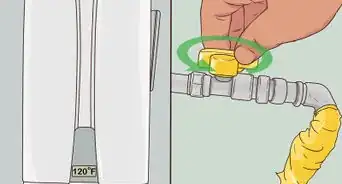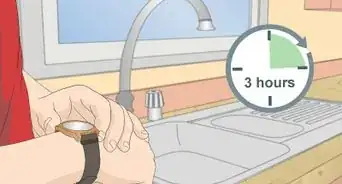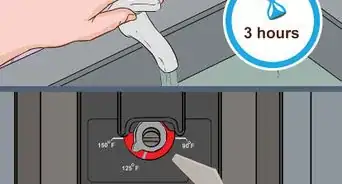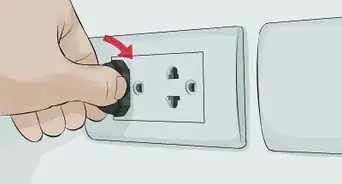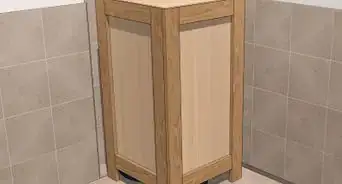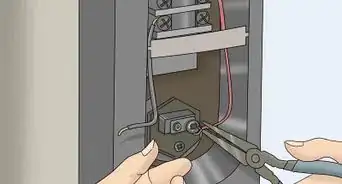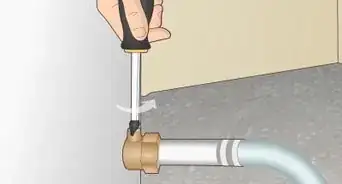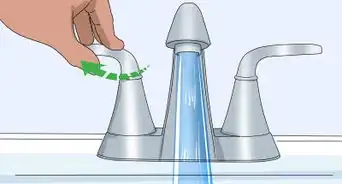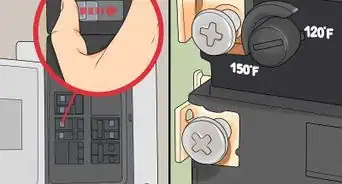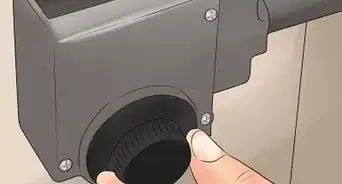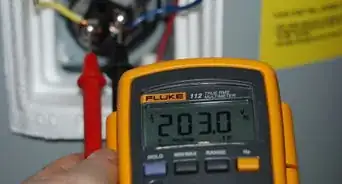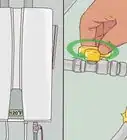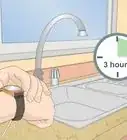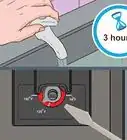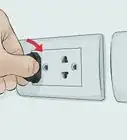This article was co-authored by wikiHow Staff. Our trained team of editors and researchers validate articles for accuracy and comprehensiveness. wikiHow's Content Management Team carefully monitors the work from our editorial staff to ensure that each article is backed by trusted research and meets our high quality standards.
This article has been viewed 26,400 times.
Learn more...
Glow Worm boilers are useful and energy-efficient way water heating systems. If you have or are planning to install a Glow Worm boiler in your home, you can learn to use them safely and efficiently. As long as you take the right precautions and read the owner's manual, you'll have no trouble using your boiler. And, if you have any concerns, you can always contact a professional home technician for advice!
Steps
Using the Boiler Safely
-
1Read the instruction manual carefully before using the boiler. To prevent damaging the boiler or injuring yourself, read the boiler's instructions completely. Pay special attention to the "Safety" section to make sure you avoid using the boiler recklessly.[1]
- Before checking the drain pipes for blockages or adding water through the filling cock, for example, read the corresponding section in the instruction manual.
-
2Hire a professional technician to install the boiler. Your boiler's installation and maintenance should never be done by an amateur. Hire a technician with experience installing hot water boilers to prevent serious injuries.[2]
- Do not do any repairs, even small repairs, by yourself. Always hire a professional to fix your boiler.
- Contact repair people in your area with experience installing boilers to find a professional technician. You can also check Glow Worm's website to find a suitable technician at https://www.glow-worm.co.uk/homeowner/find-an-installer/.
Advertisement -
3Exit your home and contact your gas supply company if you smell a gas leak. If your boiler is damaged, it may leak highly flammable natural gas. Leave your home and contact both the gas supply company and emergency services when you are in a safe area.[3]
- Do not reenter the home until professionals ensure that it is safe.
- Natural gas smells distinctly like sulfur.
-
4Add water to the boiler if the pressure falls below 0.5 bars. On your boiler's display, look at your heating system's filling pressure. This is measured in bars and, if your system works correctly, should be between 0.5 bars and 2.7 bars. Unscrew the filling cock's lid and fill the heating system with water in small amounts until it reaches the desired pressure.
- The filling cock is a metal spout located directly below the boiler box and near the pipes, and it is recognizable by its bright blue lid.
- If the water pressure is below 0.5 bars, add more water to the heating system.
-
5Call a professional to drain the boiler if the pressure is above 2.7 bars. Any reading above 2.7 bars can inhibit your boiler's safety and efficiency. If the filling pressure is too high, call a professional technician to drain the boiler.[4]
- If you notice high heating system pressure levels, do not use the boiler until the professional has drained it.
-
6Keep the boiler turned on during cold weather. Do not turn the boiler off in cold temperatures, as this can cause frost or other blockages. If you do have to turn off the boiler for an extended amount of time, have a professional inspect the system before using it again.[5]
- Hire a technician to fix your boiler if the pipes freeze or develop blockages, and do not use the boiler until they repair it.
Turning the Boiler on
-
1Open up your boiler's isolator device. When your home technician installs the boiler, have them show you where the isolator device is on your boiler and how to open the isolator cock.[6]
- The isolator device is a grey, rectangular box located near the boiler, depending on where the technician installed it.
- You should not learn how to open the isolator device without a professional's guidance. Talk to your professional technician, who can help you handle the isolator device safely for the first time
-
2Turn the boiler's main switch on to operate the device. Once you've opened the isolator device, turn the boiler on via the main switch installed by the technician. The switch is simple in design and labeled "on/off." Turn the switch to "on" when you're ready to use it.
-
3Adjust the hot water temperature as needed. Your boiler's temperature is connected to the main display. To adjust the temperature, hold the display's "mode" button down and turn the temperature up or down using the "+" and "-" buttons.[7]
- Avoid turning your water temperature any hotter than 120 °F (49 °C), as higher temperatures can burn your skin.[8]
Caring for a Glow Worm Boiler
-
1Contact a professional if you notice obstructions in the drain pipework. Your boiler will only work if the drain pipework is left clear. The drain pipework is located directly below the boiler box. Inspect its drain pipework for any objects that are blocking the drain and preventing water from coming through. If you notice any blockages, contact a professional to fix your boiler.[9]
- Do not attempt to clear out the pipework yourself. It must be fixed by a professional.
-
2Schedule an annual boiler inspection with a technician. Hire a technician once a year to routinely inspect your boiler. They can ensure that the product is both efficient and safe to use, and they can make any repairs or replacements as needed.[10]
- If you notice any damage or other problems while using the boiler, have a technician fix it as soon as possible.
-
3Use a solvent-free soap to clean its casing. Cleaning your boiler will keep it in good condition to help it last a long time. Dip a cloth in a solution of water and solvent-free soap at a ratio of around 2 tablespoons (30 mL) of soap per 4 c (950 mL) of water, and wring the cloth until it is damp. Wipe the cloth over the boiler's casing to clean its surface.[11]
- Clean the casing whenever it looks dusty or once monthly, depending on your preferences.
- The cloth should be damp, not soaking wet or dripping water.
-
4Avoid using chlorine-based cleaners on the boiler. Do not clean the boiler with sprays, soaps, scouring agents, detergents, or other cleaners that contain chlorine. Chlorine creates chemical reactions with the boiler that can be harmful or even deadly.[12]
- Inspect the cleaner's instructions thoroughly before using it to make sure it is chlorine-free.
Warnings
- Do not store flammable materials on or near your boiler.[14]⧼thumbs_response⧽
- Avoid turning the boiler off in cold weather, as the low temperatures can freeze the pipes. If the pipes freeze, contact a technician to inspect the boiler and make repairs.⧼thumbs_response⧽
- Never use sprays, soaps, scouring agents, detergents, or other cleaners containing chlorine on the boiler.⧼thumbs_response⧽
References
- ↑ https://www.glow-worm.co.uk/glow-worm/energy/energy-regular-operating-instructions-1042660.pdf
- ↑ https://www.glow-worm.co.uk/glow-worm/energy/energy-regular-operating-instructions-1042660.pdf
- ↑ https://www.glow-worm.co.uk/glow-worm/energy/energy-regular-operating-instructions-1042660.pdf
- ↑ https://www.glow-worm.co.uk/glow-worm/energy/energy-regular-operating-instructions-1042660.pdf
- ↑ https://www.glow-worm.co.uk/glow-worm/energy/energy-system-operating-instructions-1042659.pdf
- ↑ https://www.glow-worm.co.uk/glow-worm/energy/energy-regular-operating-instructions-1042660.pdf
- ↑ https://www.youtube.com/watch?v=RMdrmMXlpXA&feature=youtu.be&t=13
- ↑ https://www.energy.gov/energysaver/projects/savings-project-lower-water-heating-temperature
- ↑ https://www.glow-worm.co.uk/glow-worm/energy/energy-system-operating-instructions-1042659.pdf
- ↑ https://www.glow-worm.co.uk/glow-worm/energy/energy-regular-operating-instructions-1042660.pdf
- ↑ https://www.glow-worm.co.uk/glow-worm/energy/energy-combi-operating-instructions-1042657.pdf
- ↑ https://www.glow-worm.co.uk/glow-worm/energy/energy-combi-operating-instructions-1042657.pdf
- ↑ https://www.glow-worm.co.uk/glow-worm/energy/energy-system-operating-instructions-1042659.pdf
- ↑ https://www.glow-worm.co.uk/glow-worm/energy/energy-combi-operating-instructions-1042657.pdf
